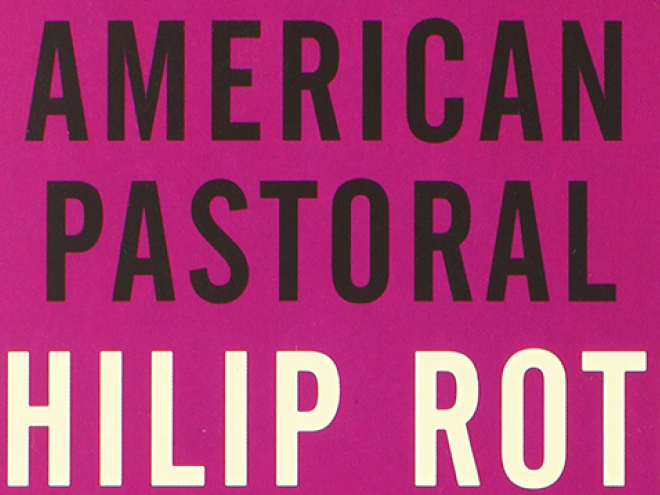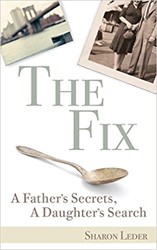
Sharon Leder, author of The Fix: A Father’s Secrets, A Daughter’s Search, has been guest blogging throughout the week as part of the Jewish Book Council’s Visiting Scribe series.
In this final segment of my Prosen People series, I will discuss how reading coming-of-age novels encouraged me to change the structure of my novel, The Fix, entirely, and to drop the character of adult Sara in favor of the young protagonist who witnesses first-hand her father Josef’s affliction of heroin addiction.
Anzia Yezierska, Johanna Kaplan, and Myla Goldberg: Daughters in The Authors’ Coming-of-Age Novels:
I learned from the Jewish women authors in the “A Mind of Her Own: Fathers and Daughters in a Changing World” seminar series how to bring scenes of the child Sara and her father to greater prominence in the novel. It was an obvious solution, but like Poe’s purloined letter, it was not on my radar screen! The novels by Yezierska, Kaplan, and Goldberg were all coming-of-age stories, narrated mostly by the young protagonists themselves. I needed to change The Fix’s point of view! The young Sara — not the adult Sara — needed to tell the tale. Was I bold enough to perform the “surgery” and leave the adult Sara on the operating table because she was no longer alive? Could I revive the character of Sara as a child, starting from the moment she learns of her father’s addiction and then trace her unfolding understanding of him and of the meaning of his illness?
Yezierska, Kaplan, and Goldberg had their female protagonists — Sara Smolinksy, Merry Slavin, and Eliza Naumann — all follow a similar narrative arc: Each develops autonomy in rebellion against her father and follows a life path guided by her own will but ultimately comes to see her father in new ways, more maturely. This is what I wanted to show in the arc of Sara Katz’s life: rebellion against her absent father for whom she harbors unresolved anger and rage, and ultimately reconciliation with that same father once she gains greater distance and understanding.
Bread Givers
Sara Smolinsky in Yezierska’s Bread Givers (1925) is the youngest but most outspoken of Reb Smolinsky’s four daughters, the one he calls Blut-und-Eisen, blood and iron, because of her strong will. I followed the pattern Yezierska set when she began her story with an eight-year-old narrator who finally explodes against the tyrannizing of her Orthodox father when she is seventeen. In this scene, Sara is speaking up for herself and her three intimidated sisters:
“For seventeen years, I had stood his preaching and his bullying. But now all the hammering hell that I had to listen to since I was born cracked my brain … Should I let him crush me as he crushed them? No. This is America, where children are people.”
Those ages, eight and seventeen, became markers in my character’s life as well. My Sara first learns at age eight of her father’s heroin addiction, a condition she doesn’t understand at all. By seventeen, she’s attending the funeral of her father, a victim of heroin overdose. By this time, her needy mother and grandmother have turned her into a “parentified” child who has learned more about the family wreckage her father’s condition causes than any youngster should know. At the funeral, she says to her younger brother:
“I can’t believe it. Daddy was just with us at your bar mitzvah. And now he’s gone … ”
“How do you think Daddy died? …Did Daddy … do it … to himself?”
“You know about things like that?” Sara asks in surprise.
He nodded.
“We just don’t know. Maybe we’ll never know … Ma and Grandma didn’t want an autopsy …”
Never in the past could she speak to her father about what she knew — his shameful life. Never could she find the right words, the right time. She had imagined approaching him that very week. And now it was too late. … Anger welled up in her — anger at her father for leaving them.And later, when Sara’s guidance counselor at school suggests she write to her deceased father to process her lingering anger, Sara says in her letter:
“I blamed you. … Mom was willing to endure the rough periods, even your hurting her at times, when you were desperate for money. I can’t believe I watched you hit her! … How could you? Oh, Dad, when will I stop blaming you for not giving up heroin totally?”
O My America!
In Jewish Book Award winner Johanna Kaplan’s novel O My America! (1980), the tables between father and daughter have turned. Merry Slavin’s father, Ez Slavin, is the flamboyant radical this time, an anarchist/pacifist whose Old Left politics in the 1930s morph into New Left politics in the ’60s. He’s an inveterate individualist constantly fighting off media attention that he claims will threaten his ability to think. After Merry’s mother dies after giving birth to her, Merry seeks greater intimacy with her absent father, a public political personality who soon partners with other women and has other children with them. Ez, who believes the nuclear family is a bourgeois construct, refuses to play traditional father with Merry.
I adopted two of Kaplan’s structural devices. The first is having the father die at the beginning of the narrative. Kaplan opens her novel with Merry waiting in her New York apartment for her father’s phone call to arrange a place for them to meet. Instead, the call comes in from the police, who have brought her father to a hospital where he dies of a massive heart attack. I open The Fix with Sara and her family waiting for Josef’s Sunday morning visit, now that he’s living with Sara’s grandparents. Instead, Sara’s mother, Helen, gets the call from her brother-in-law, who has found Josef dead from a heroin overdose in his father’s butcher shop. The deaths coming at the outset set up the question of what these men’s lives were really like. Both protagonists, Merry and Sara, have devoted much of their young lives to uncovering the mysteries surrounding their fathers’ identities.
The second is the failure of the funeral scenes in both novels to yield the true picture of the deceased, and what the impact of lack of full disclosure is on loved ones. The honorific eulogies by those who knew Ez Slavin professionally present a stark contrast to the flawed man we have met through Merry’s eyes. Likewise, Josef’s funeral scene in The Fix highlights the discrepancy between the ill man who has terrified Sara’s childhood and the good husband and father praised by Rabbi Korn’s falsehoods of omission.
Bee Season
Finally, Myla Goldberg’s Bee Season (2000), a New York Times Notable Book, features protagonist Eliza Neumann, a grade-school student at McKinley Elementary who is second fiddle in her father, Saul’s, eyes to her older brother, Aaron, until her remarkable and uncanny ability to spell difficult words becomes an “item” of note to her teachers. Eliza has always desired more of her father’s attention, but once she has it, the attention turns sour because Saul’s doting becomes a helicopter dad’s means of control. We learn that Eliza’s mother, Miriam, also has needed to “free” herself from Saul, turning to solitary activities like letter writing, shopping, and housework at odd hours.Bee Season taught me to balance my attention in The Fix on the parenting Sara receives from both parents, Helen and Josef. Bringing in the seemingly less dominant character, the mother, at the end of the novel can make use of the strategy of surprise if the mother is exposed in some unexpected and ironic way. Toward the close of Bee Season, the reader learns how psychologically ill Miriam has become “from years of being alone” avoiding the family dynamic in an unusual way. In The Fix, Helen’s insistence on keeping Josef’s addiction a secret, even after his death, turns out to be her own way of veiling her complicity in the addiction pattern, her years of enabling.
The Fix: A Father’s Secrets, A Daughter’s Search
I am left with gratitude for having had the occasion to read with care these novels by great Jewish writers and to discuss them with thoughtful audiences. As I reflect on my writing process, I see how the magical osmosis of influence has enabled my work to become invested with elements I found both consciously and unconsciously in these stimulating works of fiction. My revision of The Fix as Sara’s coming-of-age story enabled me to find the right point of view for getting in touch with my character’s childhood trauma and for communicating it convincingly. By reading fiction, I was able to reach more of the essential truth of my own story. The Fix is based on my life.
Dr. Sharon Leder Associate Professor Emerita is a natural organizer who founded Jewish Studies at S.U.N.Y.-Nassau Community College. Past Vice President of Am HaYam Cape Cod Havurah she currently serves its Interfaith Justice Committee. With Milton Teichman she edited “Truth and Lamentation: Stories and Poems on the Holocaust” (University of Illinois) nominated for the National Jewish Book Award.


